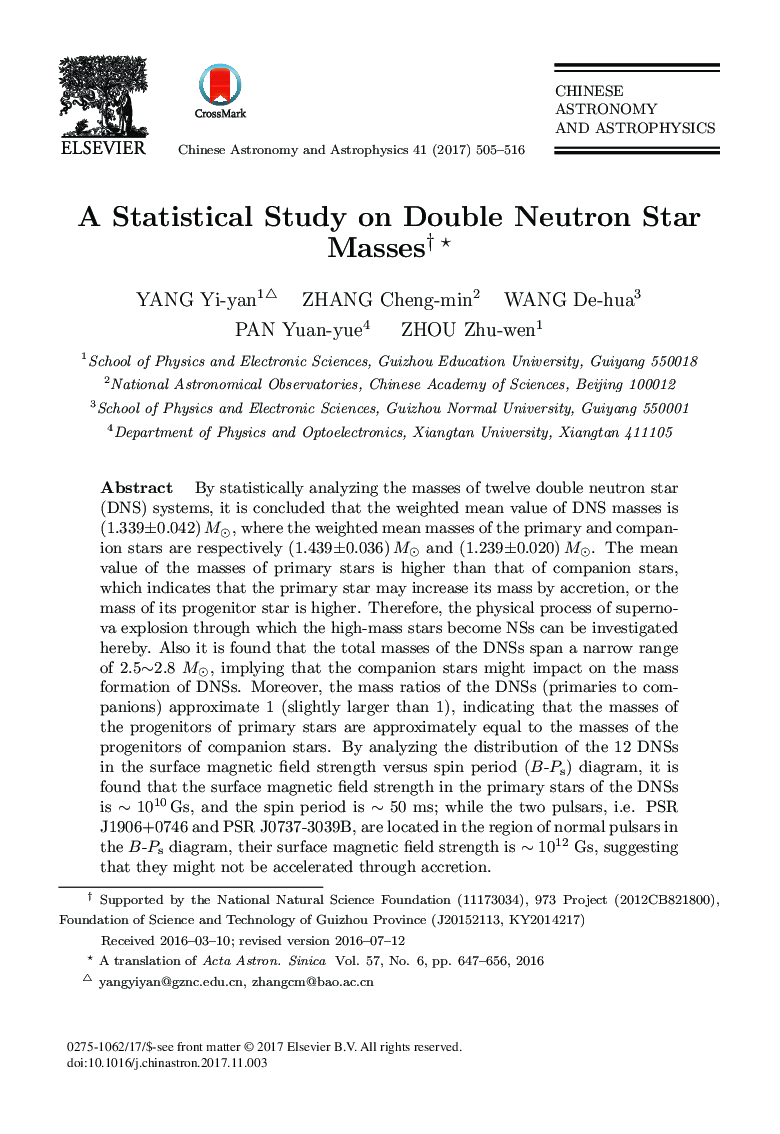| Article ID | Journal | Published Year | Pages | File Type |
|---|---|---|---|---|
| 8133185 | Chinese Astronomy and Astrophysics | 2017 | 12 Pages |
Abstract
By statistically analyzing the masses of twelve double neutron star (DNS) systems, it is concluded that the weighted mean value of DNS masses is (1.339±0.042) Mâ, where the weighted mean masses of the primary and companion stars are respectively (1.439±0.036) Mâ and (1.239±0.020) Mâ. The mean value of the masses of primary stars is higher than that of companion stars, which indicates that the primary star may increase its mass by accretion, or the mass of its progenitor star is higher. Therefore, the physical process of supernova explosion through which the high-mass stars become NSs can be investigated hereby. Also it is found that the total masses of the DNSs span a narrow range of 2.5â¼2.8 Mâ, implying that the companion stars might impact on the mass formation of DNSs. Moreover, the mass ratios of the DNSs (primaries to companions) approximate 1 (slightly larger than 1), indicating that the masses of the progenitors of primary stars are approximately equal to the masses of the progenitors of companion stars. By analyzing the distribution of the 12 DNSs in the surface magnetic field strength versus spin period (B-Ps) diagram, it is found that the surface magnetic field strength in the primary stars of the DNSs is â¼ 1010 Gs, and the spin period is â¼ 50 ms; while the two pulsars, i.e. PSR J1906+0746 and PSR J0737-3039B, are located in the region of normal pulsars in the B-Ps diagram, their surface magnetic field strength is â¼ 1012 Gs, suggesting that they might not be accelerated through accretion.
Related Topics
Physical Sciences and Engineering
Physics and Astronomy
Astronomy and Astrophysics
Authors
Yang Yi-yan, Zhang Cheng-min, Wang De-hua, Pan Yuan-yue, Zhou Zhu-wen,
